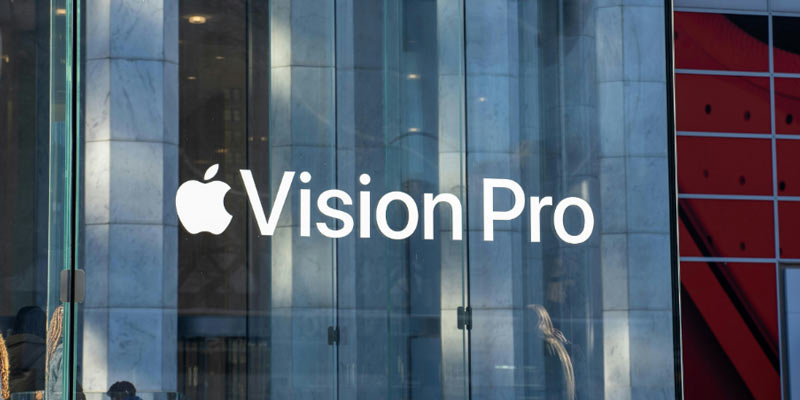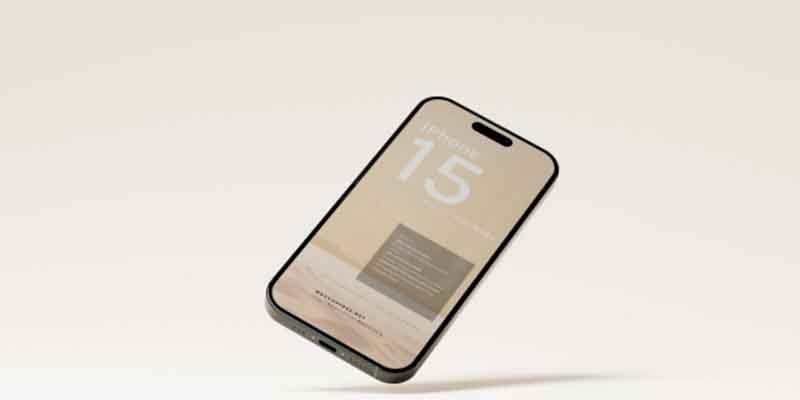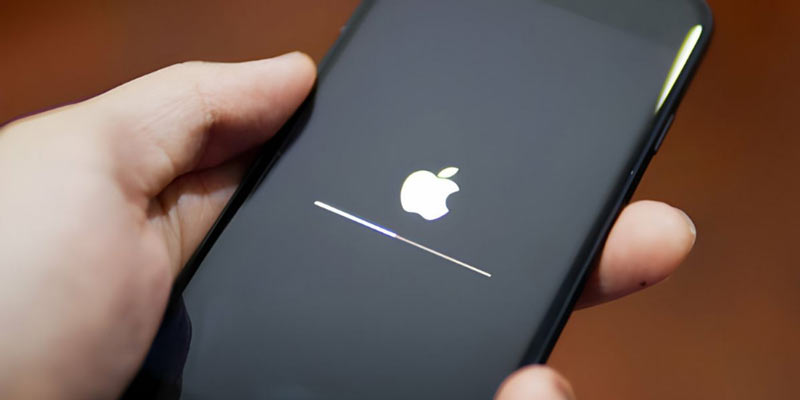In the ever-evolving landscape of technology, Apple has once again pushed the boundaries with its latest release, the Apple Vision Pro. This revolutionary device marks the tech giant’s foray into the world of augmented and virtual reality, promising a seamless integration of digital content with the physical world.
Unveiled at WWDC 2023 after over a decade of development, the Vision Pro has since captivated the imagination of Apple tech enthusiasts and consumers alike.
Introducing Vision Pro. What are the parameters?
The Apple Vision Pro stands as a testament to Apple’s commitment to innovation. It presents itself not just as a headset but as a spatial computer designed to revolutionize how users interact with technology.
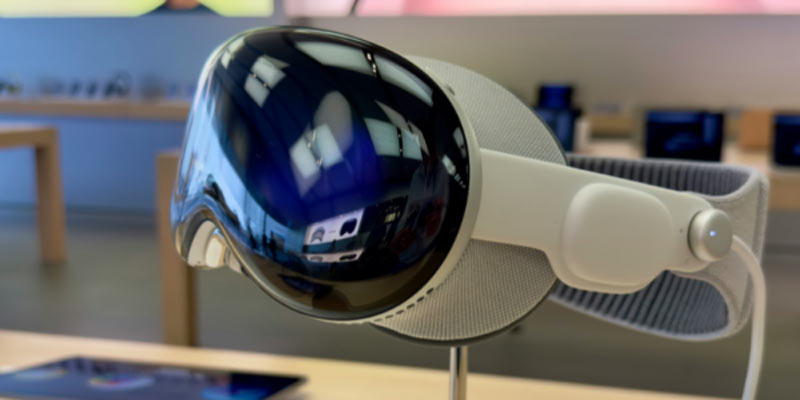
Vision Pro Design
Its design is a harmonious fusion of aesthetics and functionality, resembling a pair of high-end ski goggles. Crafted with precision, the Vision Pro features a laminated glass front seamlessly integrated with an aluminum alloy frame, radiating elegance while ensuring durability.
One of the most notable design elements of the Vision Pro is its external battery system, a departure from traditional headset designs. By relocating the battery off the user’s head and tethering it to a magnetic connector on the left arm, Apple has effectively reduced the weight on the user’s head, enhancing comfort during prolonged use. However, it’s worth noting that despite this innovative design choice, the Vision Pro remains a relatively heavy headset, weighing between 600 and 650 grams, primarily attributed to its premium materials and robust construction.
Display
Regarding visual experience, the Vision Pro sets a new standard with its dual micro-OLED displays, delivering an astonishing resolution of over 4K to each eye. With a total of 23 million pixels at their disposal, users are treated to unparalleled clarity and immersion, whether they’re exploring virtual worlds or engaging with augmented reality applications. Additionally, the inclusion of an external EyeSight display adds a layer of social awareness, allowing others to discern the wearer’s engagement in digital experiences.
Cameras & Sensors
The Vision Pro is equipped with a formidable array of cameras and sensors, totaling,
- 12 cameras
- a LiDAR sensor
- a depth projector
- six microphones.
Eight of these cameras are strategically placed under the front glass, with two dedicated to providing high-resolution color for the headset’s passthrough view of the real world. This high-resolution passthrough, coupled with ambient light sensors and flicker sensors, ensures seamless integration of virtual elements with the user’s environment.
Hand-tracking capabilities further enhance the user experience, offering precise and intuitive control without the need for cumbersome hardware controllers. Meanwhile, the LiDAR sensor facilitates real-time 3D meshing of the user’s surroundings, opening up possibilities for immersive experiences and spatial computing applications.
Face & Eye Trackers
Vision Pro’s advanced face and eye tracking technology serves multiple purposes, from authentication to enhancing the realism of virtual interactions. Including iris scanning authentication, branded as OpticID, ensures secure access to the device while maintaining user privacy. Furthermore, foveated rendering optimizes performance by rendering high-resolution graphics only in the user’s line of sight, maximizing efficiency without compromising visual fidelity.
R1 Chip
At the heart of the Vision Pro lies the custom-designed R1 chip, a powerhouse engineered to deliver unparalleled performance and ultra-low latency. With a staggering 256GB/s memory bandwidth, the R1 chip ensures seamless integration of input from cameras, sensors, and microphones, streaming new images to the displays within a mere 12 milliseconds. This remarkable feat of engineering enhances the device’s overall responsiveness and lays the groundwork for future advancements in spatial computing technology.

Pricing of the Vision Pro
The pricing and availability of the Apple Vision Pro represent significant considerations for potential buyers interested in adopting this cutting-edge spatial computing device. Priced at $3,499, the Vision Pro commands a premium in line with its advanced technology and features. This price point positions it as a high-end product catering to enthusiasts and professionals seeking the latest augmented and virtual reality innovations.
The Vision Pro officially launched on February 2, 2024, marking a milestone in Apple’s journey into spatial computing. Pre-orders began on January 19, allowing eager consumers to secure their devices before the official release date. However, it’s worth noting that initial availability was limited to the United States, with Apple’s plans to gradually expand distribution to other countries in the near future. This rollout strategy reflects Apple’s strategic approach to product launches, ensuring a controlled release to manage demand and logistics effectively.
In addition to the Vision Pro headset itself, purchasers can expect a range of accessories included with their purchase. These accessories aim to enhance the user experience and cater to individual preferences. Among these accessories are different-sized Light Seals, providing customization options for achieving the optimal fit and blocking out external light. Users also have the choice of headbands, allowing for personalized comfort and style. Additionally, optional Zeiss Optical Inserts cater to glass wearers, ensuring a comfortable and precise viewing experience for all users.
User Feedback and Considerations for Apple Vision Pro
Despite the Apple Vision Pro’s groundbreaking technology and sleek design, it has elicited a spectrum of reactions from both users and tech critics alike. While many commend its advanced hardware capabilities and immersive experiences, some notable concerns and considerations have emerged, dampening the universal acclaim it initially garnered.
A primary concern voiced by users is the issue of comfort, particularly during prolonged usage sessions. The weight of the Vision Pro, despite the innovative external battery design aimed at alleviating pressure on the wearer’s head, remains a significant factor contributing to discomfort for some users. Reports suggest that the headset’s weight, which can range between 600 and 650 grams, can lead to fatigue and pain, especially during extended periods of use.
Furthermore, critiques have surfaced regarding the performance of certain features, notably the external EyeSight display. While intended to enhance social interaction and awareness by projecting the user’s eyes to others in the vicinity, some users have found its functionality lacking. Issues such as incorrect tracking accuracy and limitations in displaying facial expressions have been cited. This detracts from the intended seamless integration of virtual and real-world interactions.
In addition to concerns about comfort and performance, users have highlighted technical limitations that detract from the overall experience. Motion blur, particularly during fast-paced movements or rapid head turns, has been identified as a noticeable issue by some users. It has been known to affect visual clarity and immersion in virtual environments. Moreover, limitations in low-light conditions have been reported. Users noted reduced visibility and clarity when operating the Vision Pro in dimly lit environments.
Is the Apple Vision Pro Worth Buying?
Whether the Apple Vision Pro is worth purchasing is multifaceted and depends on various factors. As a pioneering device in spatial computing, the Vision Pro represents a significant technological leap forward, offering a glimpse into the future of immersive computing experiences. However, several considerations must be weighed before making a purchasing decision.
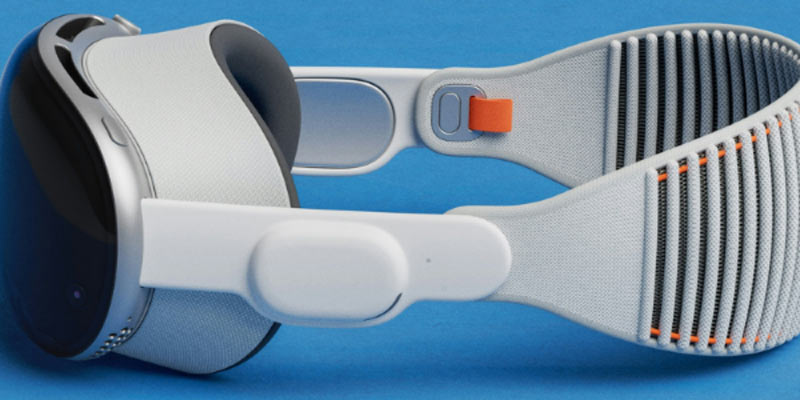
High Price Point vs. Value Proposition
One of the primary factors influencing the decision to invest in the Apple Vision Pro is its high price point, currently priced at $3,499. While this price reflects the device’s cutting-edge technology and premium design, it may present a barrier for some consumers. Potential buyers must assess whether the features and capabilities offered by Vision Pro justify its premium price tag and align with their budgetary constraints.
Early-Stage Limitations
Despite its technological advancements, the Vision Pro has limitations, particularly in its early stages of release. User feedback has highlighted concerns regarding comfort, weight, performance of certain features, and technical limitations such as motion blur and low-light visibility. These early-stage limitations may deter some consumers from investing in the Vision Pro, especially those seeking a flawless and polished user experience.
Target Audience: Enthusiasts vs. Average Consumers
The decision to purchase the Apple Vision Pro may also depend on the individual’s level of enthusiasm for emerging technologies and their willingness to embrace early adopter status. For enthusiasts and early adopters eager to explore the forefront of augmented and virtual reality, the Vision Pro presents an opportunity to immerse themselves in groundbreaking experiences and contribute to the evolution of spatial computing technology. However, for the average consumer seeking a more refined and versatile experience, it may be prudent to wait for future iterations of the device that address early-stage limitations and offer enhanced functionality.
Final Words
In summary, the Apple Vision Pro undeniably demonstrates groundbreaking innovation and potential, yet it currently occupies a niche market with evident areas for enhancement. Looking ahead, the evolution of technology promises exciting prospects for the refinement and expansion of Apple’s spatial computing platform. As advancements unfold, the Vision Pro may evolve to cater to a broader audience, offering refined experiences and addressing current limitations. Thus, the future holds promise for further innovation and development of the Apple Vision Pro, paving the way for a more immersive and seamlessly integrated spatial computing landscape.
